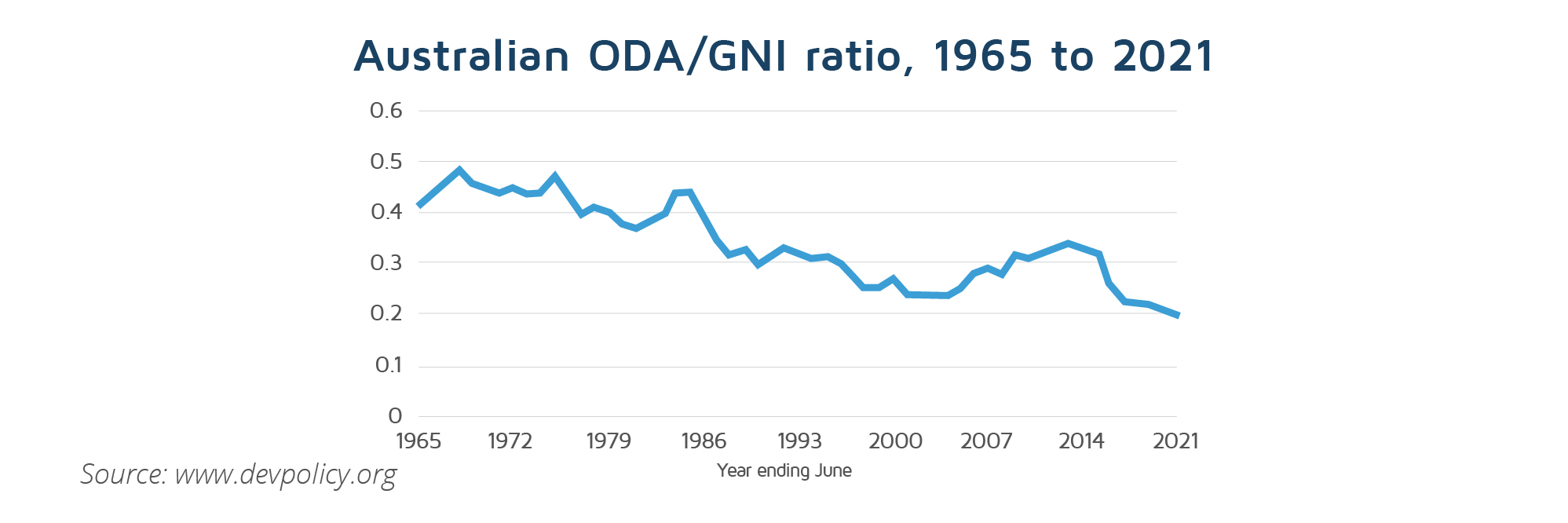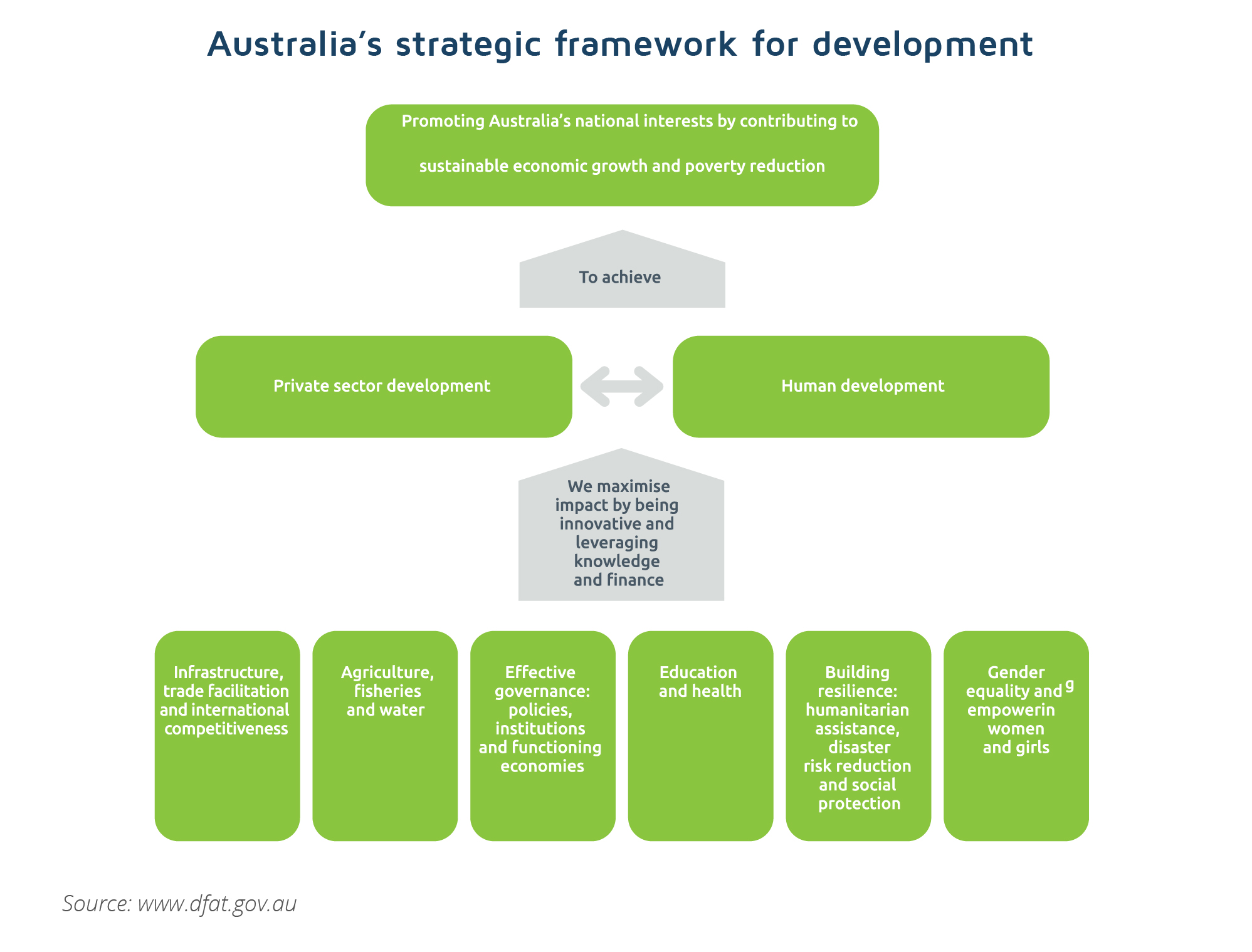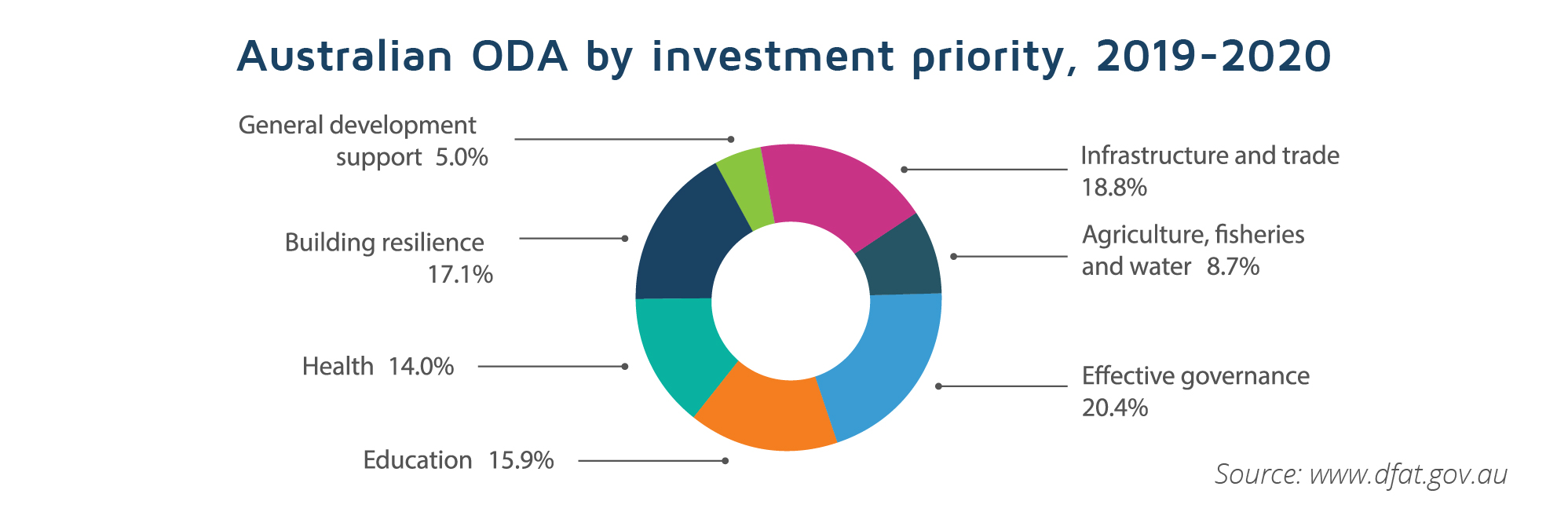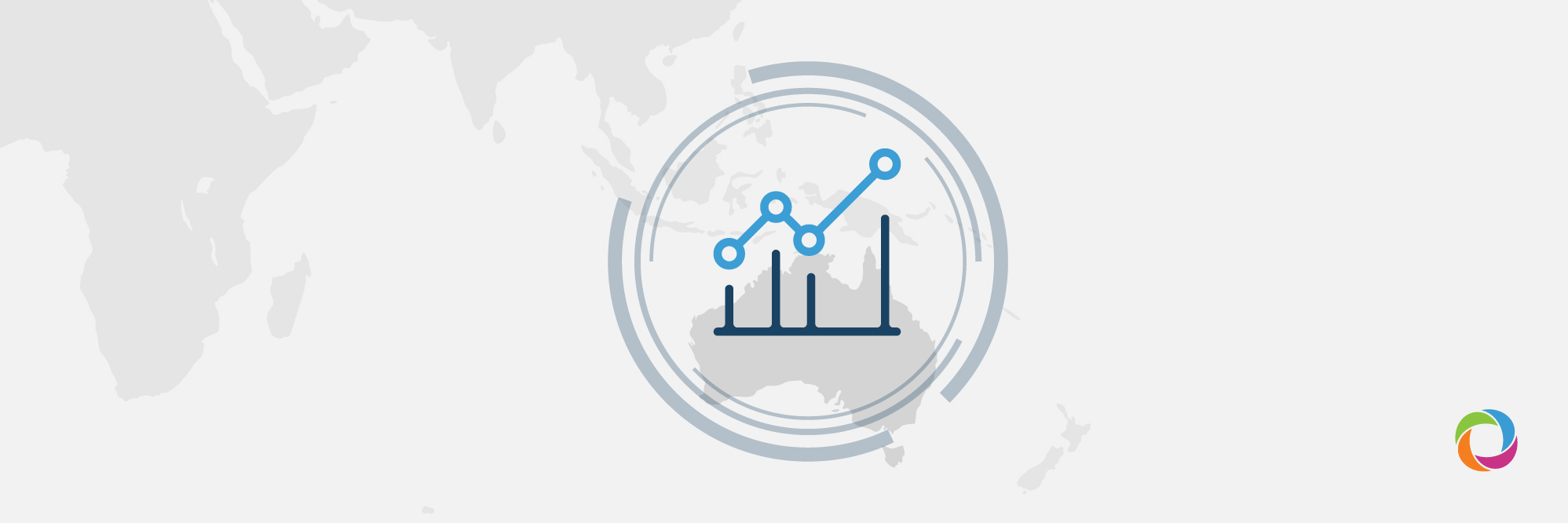Australia’s development strategy aims to promote its national interests and focuses primarily on the Indo-Pacific region, where 90% of its development assistance is directed. The country has allocated US$2.5 billion to development for the year 2019/20 which, in real terms, represents a budget cut, a current trend which is expected to continue in the following years.
Australia is the 11th largest donor country in the world, providing a 0.21% share of its Gross National Income (GNI) for official development assistance (ODA) for the year 2019/20. The share is below the 0.7% target set by the United Nations for international development spending. Australian aid amounted to US$2.5 billion (AU$4 billion) for the period mentioned and has held steady at this amount since 2017/18. The Australian government has decided to freeze the country’s aid at AU$4 billion until 2021 which, in real terms, actually represents a cut to the aid budget. This budget freeze accelerates the country’s diminishing aid generosity whereby ODA, as a proportion of GNI, fell to 0.22% in 2017/18 and to an unprecedented forecast of 0.20% for 2020/21.

A carefully targeted development program, which would tackle poverty and build a more resilient Indo-Pacific region, is the cornerstone of the country’s development strategy which also best serves its national interests. “Development assistance with a strong regional focus builds on our deep links through our geography, history, trade, education and employment and brings Australia and our neighbors closer together”, stated the Australian Minister of Foreign Affairs, Marise Payne. The Indo-Pacific is one of the most economically dynamic regions in the world. It is also the site of distinct development disparities – some of the fastest developing economies are located here, along with some of the world’s poorest people. This context provides Australia with not only opportunities but also the challenges of ensuring that the benefits of growth are shared evenly across the region.

Most of Australia’s aid is delivered bilaterally, mainly in the form of grants. The aid is provided by both the partner government or a third party, such as an NGO or a private sector contractor. The development priorities and program design are planned out together with partner governments in order for these to be aligned with local needs. The Pacific is where Australia invests the largest share of its ODA and the country is set to grow this partnership in the future. Approximately 35% of the country’s aid, or US$875 million, is directed towards the Pacific with the largest recipients being Papua New Guinea, Solomon Islands, Vanuatu and Fiji. In 2019, Australia announced a new initiative to boost its Pacific engagement, the Australian Infrastructure Financing Facility, a US$1.2 billion infrastructure program that will utilize grant funding combined with loans to support the development of high priority infrastructure in the region.
The next largest recipient region is Southeast and East Asia where 25%, or US$625 million, of Australian ODA is delivered. In this location the largest recipients are Indonesia, Timor-Leste, Myanmar, the Philippines, Vietnam and Cambodia. In both the Pacific and the South-east and East Asia the investments are directed primarily to effective governance, infrastructure and trade, education and health.

The Pacific and Southeast Asia are home to 40% of the world’s natural disasters which undermine growth and reverse development investments. Investing in disaster risk reduction in the region is an essential pillar of the country’s development strategy with evidence suggesting that every US$1 invested can save up to US$15 in the aftermath. In this context, Australia has spent almost US$200 million over the four years up to 2020 in climate change and disaster resilience programs, recognizing that these investment areas will become increasingly important to maintaining stability in the region. The country’s largest ever investment in disaster preparedness is the US$ 30 million Disaster READY initiative (2018/22) which focuses on five countries in the immediate region—Fiji, Papua New Guinea, Solomon Islands, Timor-Leste and Vanuatu.
Australia also provides funding to multilateral organizations and funds, such as the World Bank, the Asian Development Bank (ADB), the United Nations (UN), the Vaccine Alliance (GAVI) and the Global Fund to Fight AIDS, Tuberculosis and Malaria (the Global Fund). This funding is often pooled with financial resources from other governments and then used to reduce poverty in developing countries. For the fiscal year 2019/20, Australia is providing a total of US$680 million for global programs, of which almost US$300 million is directed at humanitarian assistance.
In 2019, Australia announced public consultations for its new development policy which will provide a framework for the development of new comprehensive country and regional plans for the spending of its US$2.5 billion aid over the next five years.
To review existing opportunities with the Australian Department of Foreign Affairs and Trade (DFAT), check out the DevelopmentAid Funding page.
DevelopmentAid will continue to follow the developments of Australian ODA and, if you want to stay informed about relevant information, make sure to Register and Subscribe to our newsletter.

